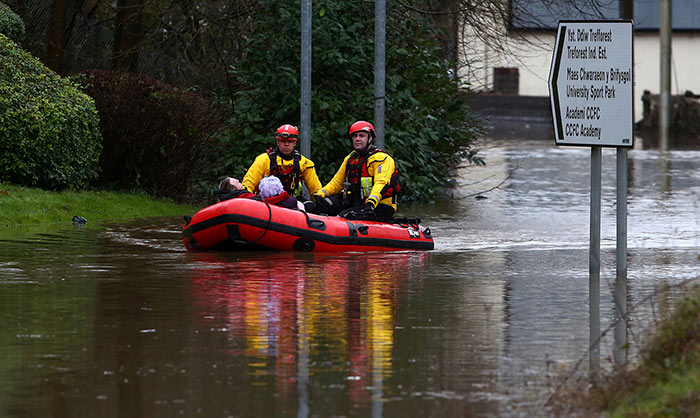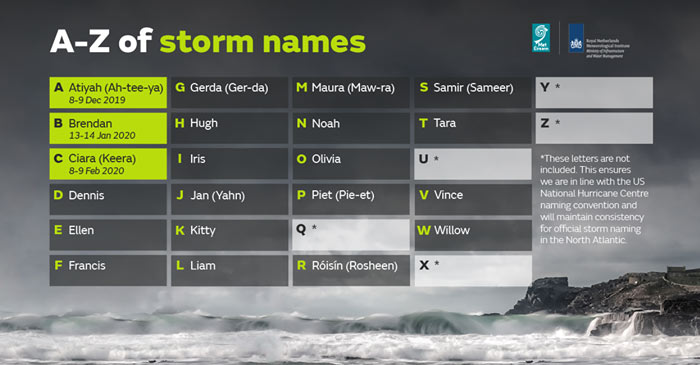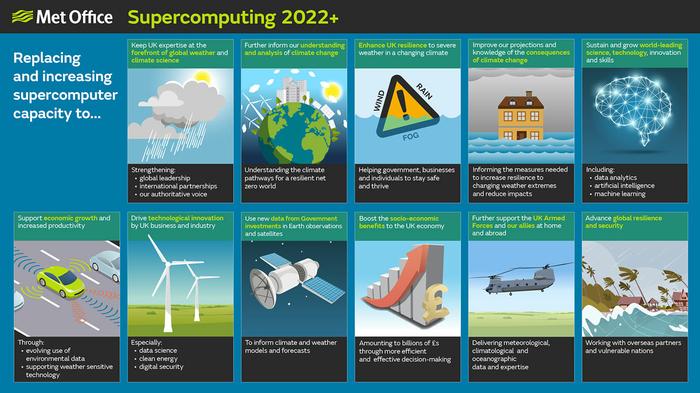The UK government has confirmed an investment of £1.2bn will be made to develop and run "the world's most powerful weather and climate supercomputer". Announced today by Business and Energy Secretary and COP26 President Alok Sharma, the state-of-the-art supercomputer will be managed by the UK's Met Office and it will replace the existing trio of Met Office Cray XC40 supercomputers from 2022 onwards. The Met Office's three XC40s from 2014 cost a tenth as much as this new weather and climate supercomputer project will.
Click to zoom - weather and climate supercomputer benefits infographic
As the first phase of the new Met Office supercomputer rolls out it will increase the computing capacity available sixfold. By the end of the 10 year implementation period it is expected to gain a further threefold computational capacity. Of the £1.2bn earmarked for the project £854 million is for the supercomputing capability and the remainder of the sum for investment in the observations network and other related costs. It is worth remembering that the current Met Office Cray XC40 is thought to have provided "£2bn of socio-economic benefits across the UK through enhanced prediction of severe weather and related hazards".

With weather seemingly increasingly erratic of late, it is hoped the new supercomputer will enable the government to make solid, well researched positions in predicting extreme weather and climate forecasting. Data distilled from the supercomputer "will be used to help more accurately predict storms, select the most suitable locations for flood defences and predict changes to the global climate," says the government. Furthermore, the following analysis from the new supercomputer will help people and communities become better prepared, due to:
- More sophisticated rainfall predictions, helping the Environment Agency rapidly deploy mobile flood defences
- Better forecasting at airports so they can plan for potential disruption; and
- More detailed information for the energy sector to help them mitigate against potential energy blackouts and surges

Currently Met Office computers have been able to predict major storms like the recent Ciara and Dennis (and the nasty 'Beast from the East' in 2018) five days ahead of landing. Weather predictions are updated every three hours by the Cray XC40 systems. This will change to 1hr updates, with improved accuracy, when the new supercomputer is in place.








